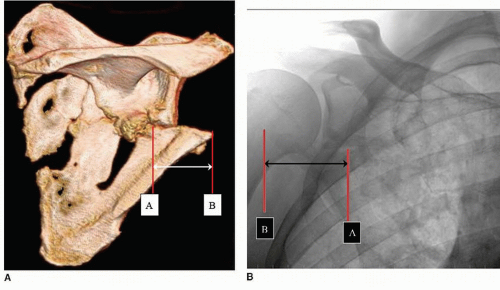How to Recognize and Manage Scapula Fractures
Understanding Scapula Fractures
Scapula fractures occur when the shoulder blade endures too much force, resulting in a crack, break, or shattering of the bone. These types of fractures are often associated with severe trauma, such as high-impact falls, car accidents, or athletic injuries.
Scapula fractures are uncommon and occur in less than 1% of all bone fractures. However, they are more prevalent in individuals who participate in high-impact sports such as football or hockey.
Scapula fractures can be classified into three categories:
- Fractures of the neck or body: These involve the center part of the scapula and can vary in severity, depending on the extent of the fracture.
- Fractures of the glenoid cavity: This refers to the cup-like depression where the upper arm bone fits into the shoulder. These types of fractures can sometimes affect shoulder joint function.
- Fractures of the processes: The scapula has three bony protrusions called processes, which serve to connect parts of the shoulder muscles. The fractures of these processes can cause discomfort when moving the arm or shoulder.

Identifying Scapula Fractures
Scapula fractures can cause a range of symptoms, although some individuals may experience no immediate symptoms. Common symptoms of a scapula fracture include:
- Intense pain in the shoulder blade area
- Swelling or bruising around the shoulder blade region
- Limited mobility or inability to move the shoulder, arm, or elbow
- A popping or cracking sound upon movement
- Numbness or tingling in the arm
If you suspect you may have a scapula fracture, seek immediate medical attention. Your doctor may conduct a physical examination, including X-rays or other imaging tests, to confirm a diagnosis and determine the extent of the injury.
Treating Scapula Fractures
The majority of scapula fractures do not require surgery and can be treated with non-operative methods. The first step in treating a scapula fracture is immobilization.
Your doctor may recommend wearing a shoulder brace or sling to immobilize the arm and shoulder for a few weeks. This will allow the fracture to heal correctly and prevent further injury. You can also apply ice to the affected area to reduce swelling and discomfort.
After immobilization, your doctor may recommend rehabilitation exercises to improve range of motion and strength gradually. Physical therapy exercises taught by a professional can help restore muscle function and prevent long-term effects on shoulder function.
In some cases, surgery may be necessary to repair severe fractures. This is typically the case only if the injury results in a displaced or unstable fracture, causing a misalignment of the shoulder joint or damage to surrounding tissues.
Prevention of Scapula Fractures
Prevention is always better than cure when it comes to scapula fractures. Some effective strategies that can help reduce your risk of injury include:
- Always wearing a seatbelt while driving or riding in a car
- Following safety guidelines when playing high-impact sports or engaging in physical activity
- Maintaining appropriate stretching and warm-up exercises before engaging in physical activities
- Following guidelines for fall prevention, such as wearing non-slip shoes and using assistive devices
Conclusion
Scapula fractures are serious injuries that can result from high-impact falls or accidents. Knowing how to recognize and manage these fractures is crucial in preventing further complications and optimizing recovery time. Be sure to seek medical attention if you suspect you have a scapula fracture and follow your doctor’s recommendations for treatment and rehabilitation. By taking preventative measures and following safety guidelines, you can reduce your risk of sustaining a scapula injury.

